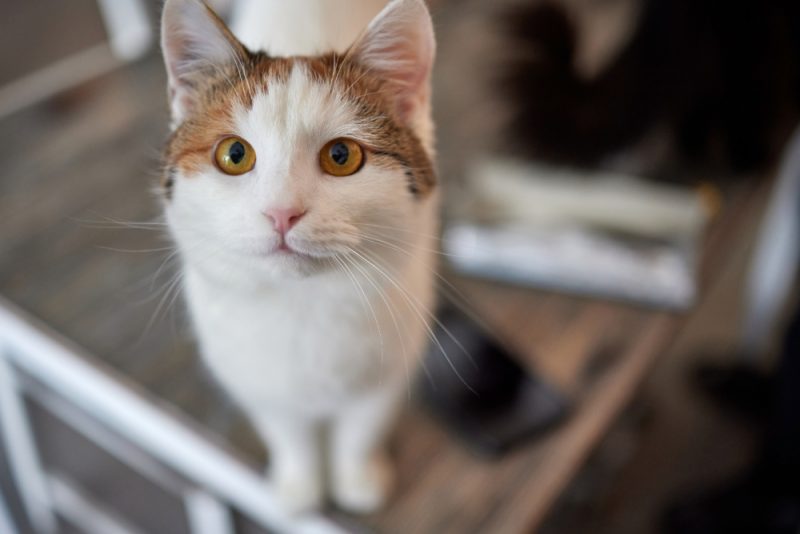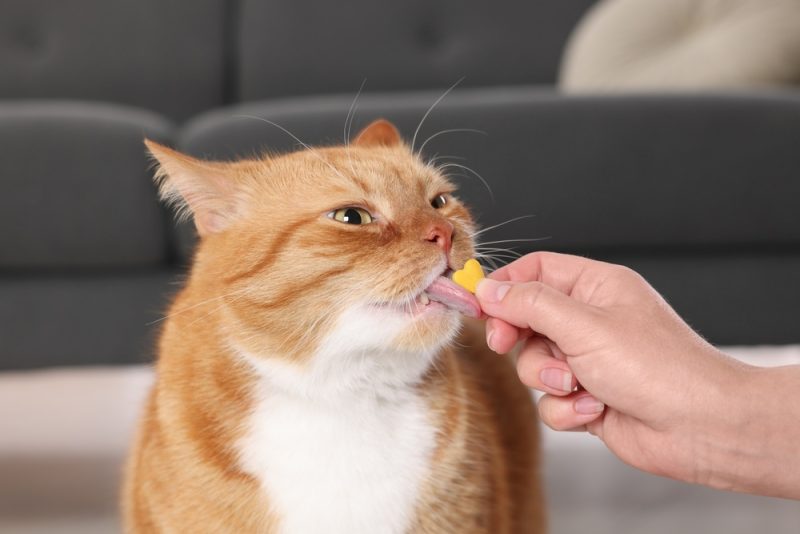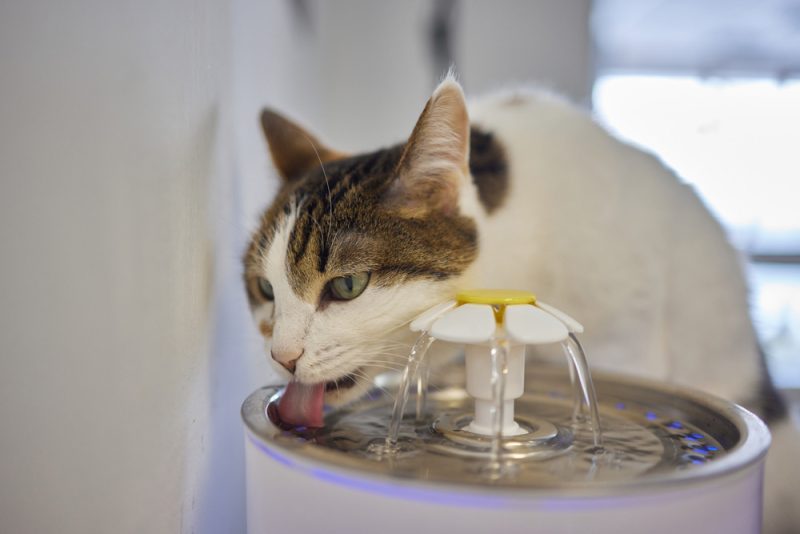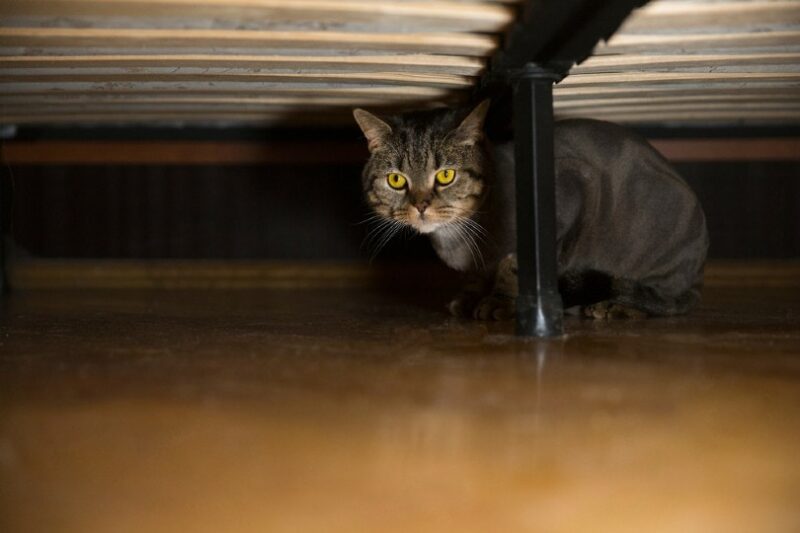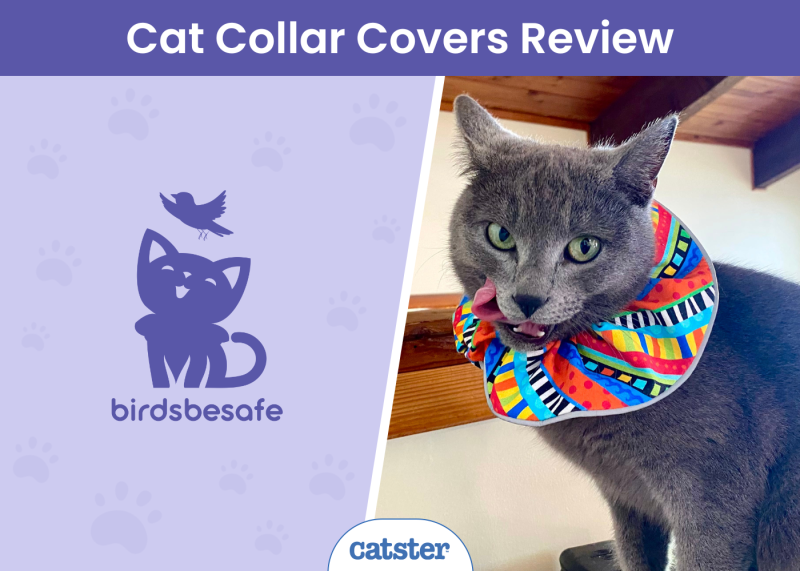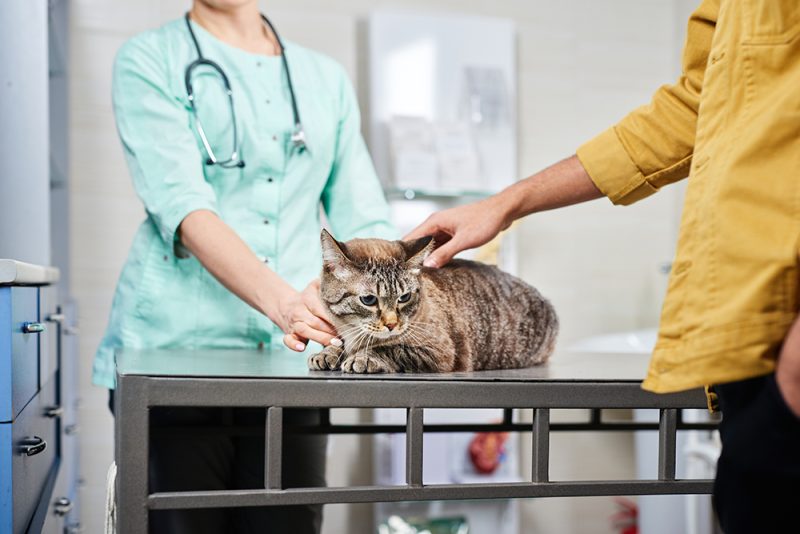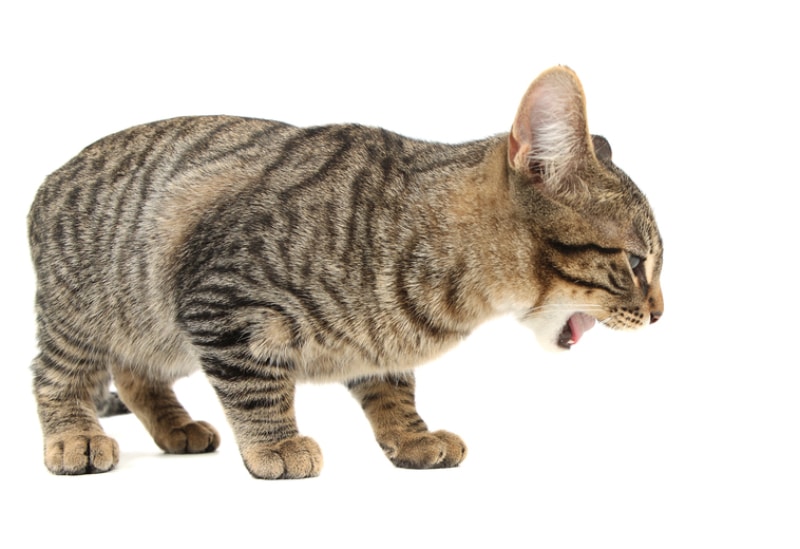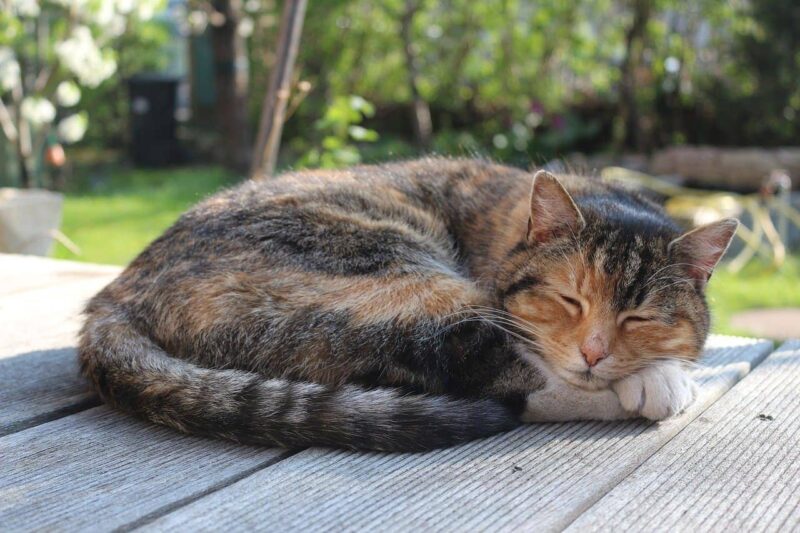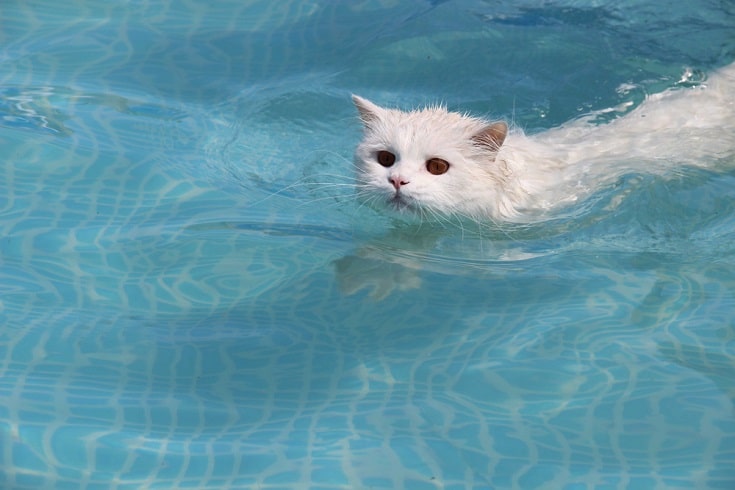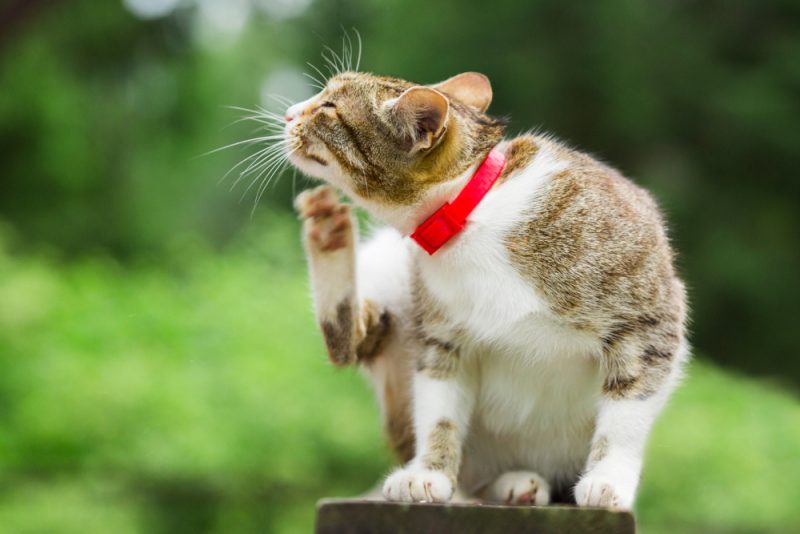If you own a cat, you’ve probably wondered how intelligent they are. After all, sometimes they can be silly goofballs, while at other times, they can find their way to harass you in the bathroom in the pitch black of night with their mouse toy.
So, how big is a cat’s brain? And does that brain size equate to intelligence? Your cat’s brain is roughly 2 inches long. It only weighs an ounce, which puts your cat’s brain at about 1% of their body weight. Read on for more interesting details.

The Size of a Cat Brain
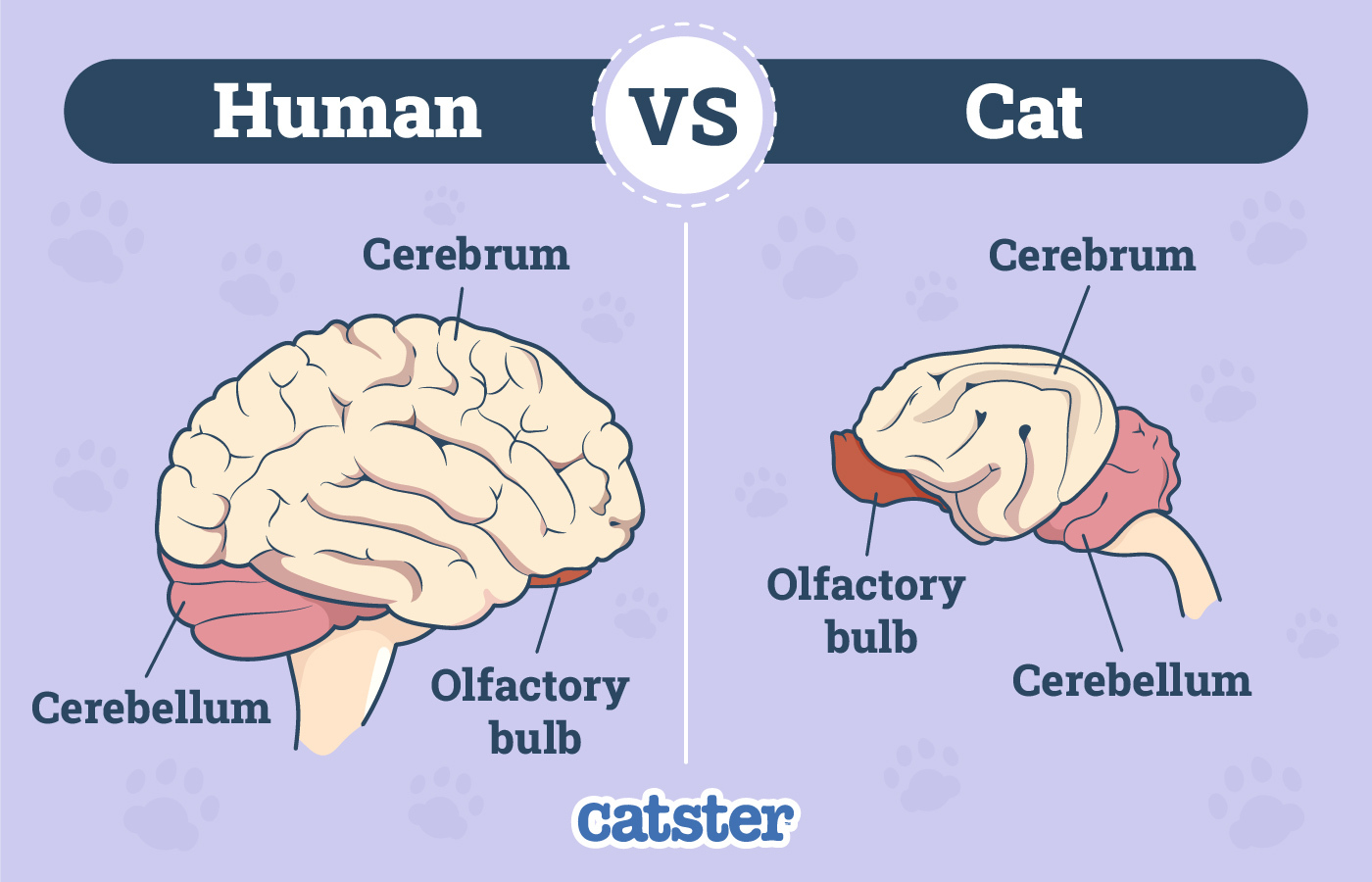
Purely based on size, a dog’s brain is larger than a cat’s brain; a cat’s brain is slightly larger than a walnut, while a dog’s brain is roughly the size of a tangerine. It’s not necessarily the size that equates with how smart an animal is; the structures and surface folding determine how intelligent an organism is.
Cats have a brain structure more similar to ours than to a dog’s brain. In fact, their brain is about 90% identical to ours, so think about that next time you’re wondering how smart your kitty is!
Don’t panic and start worrying about the cat overlords taking over, however. We have a significant difference in the number of neurons in our cerebral cortex. Cats have roughly 300 million, and we have 21 to 26 billion neurons in that same structure in our brain.1
Dogs tend to have more neurons than cats, which is likely because they have a larger brain size. In dogs, there’s more development of the social cognition portion of the cerebral cortex, while in cats, a more significant portion is devoted to movement and vision. That means each pet tends to be better at something different than the other.

How Do Cats Use Their Brains?
Your cat’s brain helps regulate every aspect of their life, and it’s the driving force for cats to be crepuscular. Animals like cats that are crepuscular are primarily active in the dawn and twilight hours. It allows them to prey on smaller animals that are also crepuscular. Other animals that exhibit this behavior include:
- Deer
- Opossums
- Hamsters
- Skunks
Based on this behavior pattern, don’t be surprised if your kitty wakes you in the pre-dawn hours. It’s instinct. They’re not trying to torture you.
Cats do other things differently than our canine friends. For example, if you have an outdoor cat that likes to hunt, you should also know they will keep hunting even if they’ve eaten already. This behavior differs from dogs, who typically stop hunting after eating.

The 5 Cat Senses
What your cat can detect with such a small brain is pretty impressive. Their brain allows them to uniquely utilize their senses to help them survive in their environment.
1. Sight
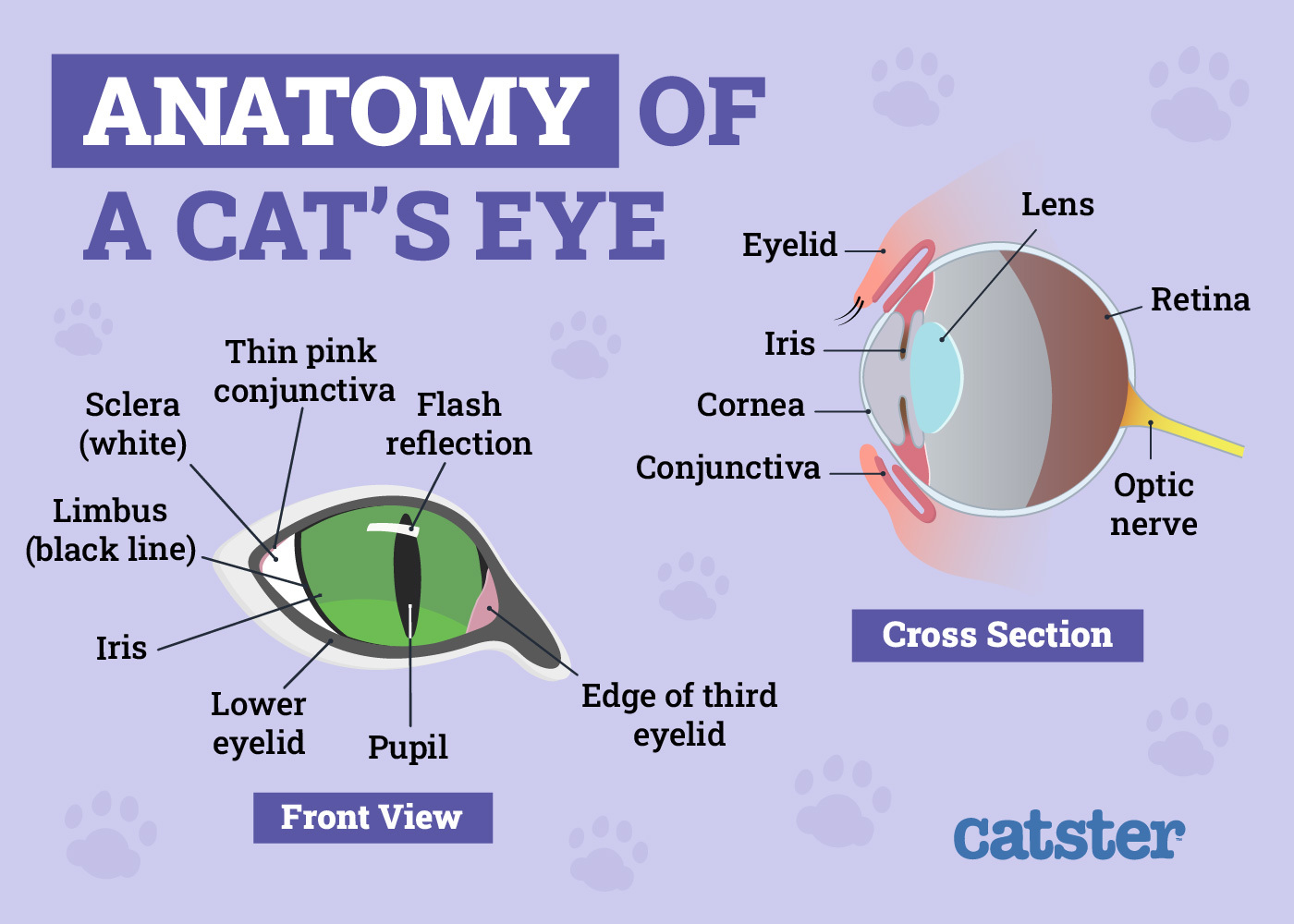
Your cat’s eyes can see incredibly well, even in a dark environment. Cats have a structure known as the tapetum lucidum in their eyes, which helps reflect photons of light back onto the retina, allowing them to have a second chance to utilize the light and see.
Cats also have more rods in their eyes than a person. These photoreceptor cells function best in dim light, allowing your cat to see better in the dark than you. The difference in rods and cones also affects the colors that cats see in the world.
2. Taste
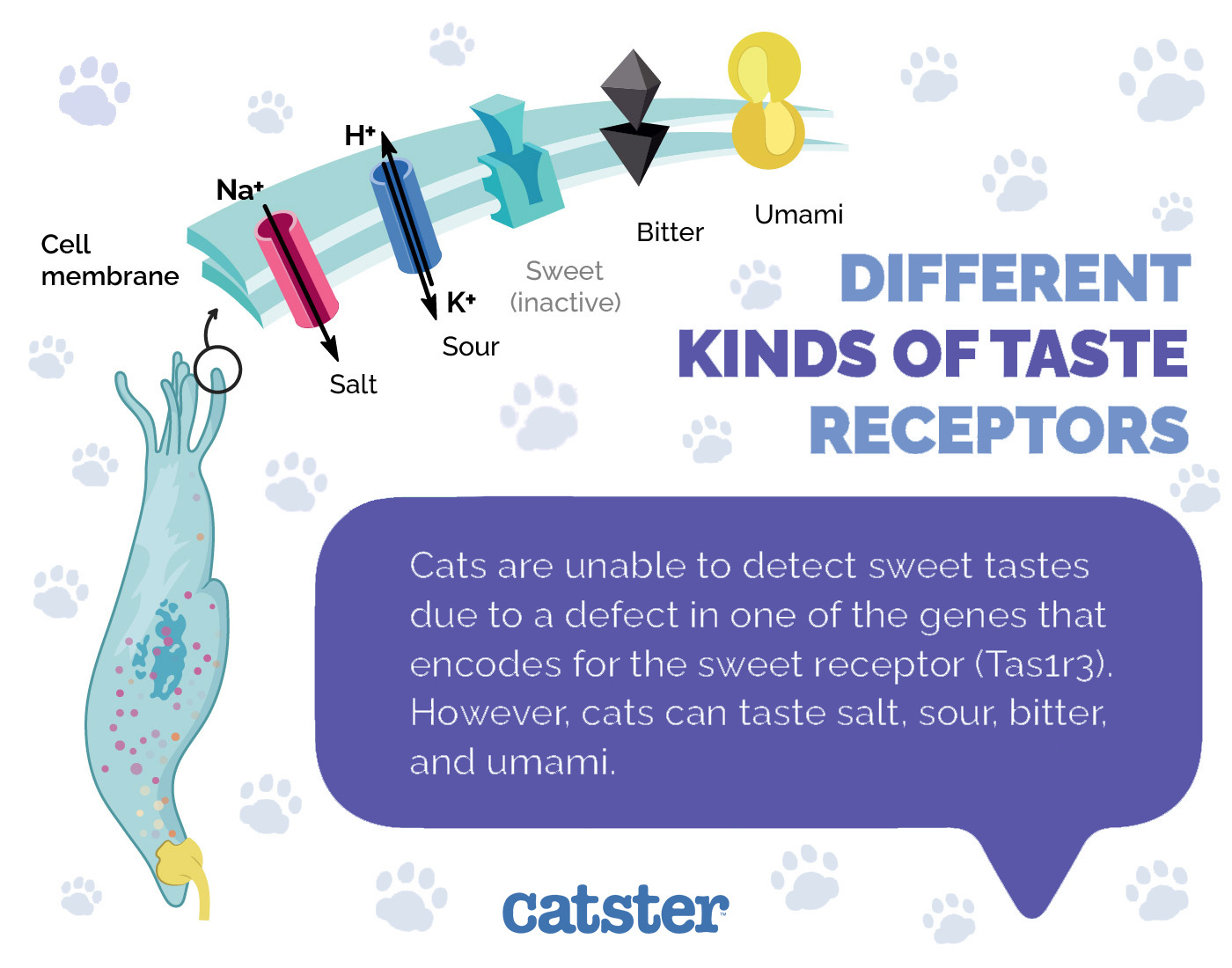
Cats don’t have the same way to sense taste that you do. While we have around 9,000 taste buds, our kitties only have a few hundred taste buds. What is especially interesting about this is that cats don’t seem to be able to taste sweet things. If your cat is trying to get to your sweets, like whipped cream or ice cream, it’s not likely the sugary goodness they’re after but the fats they’re attracted to.
They can taste bitter and associate it with danger or poison, so watch out if you’re using a lemon spray.
3. Hearing
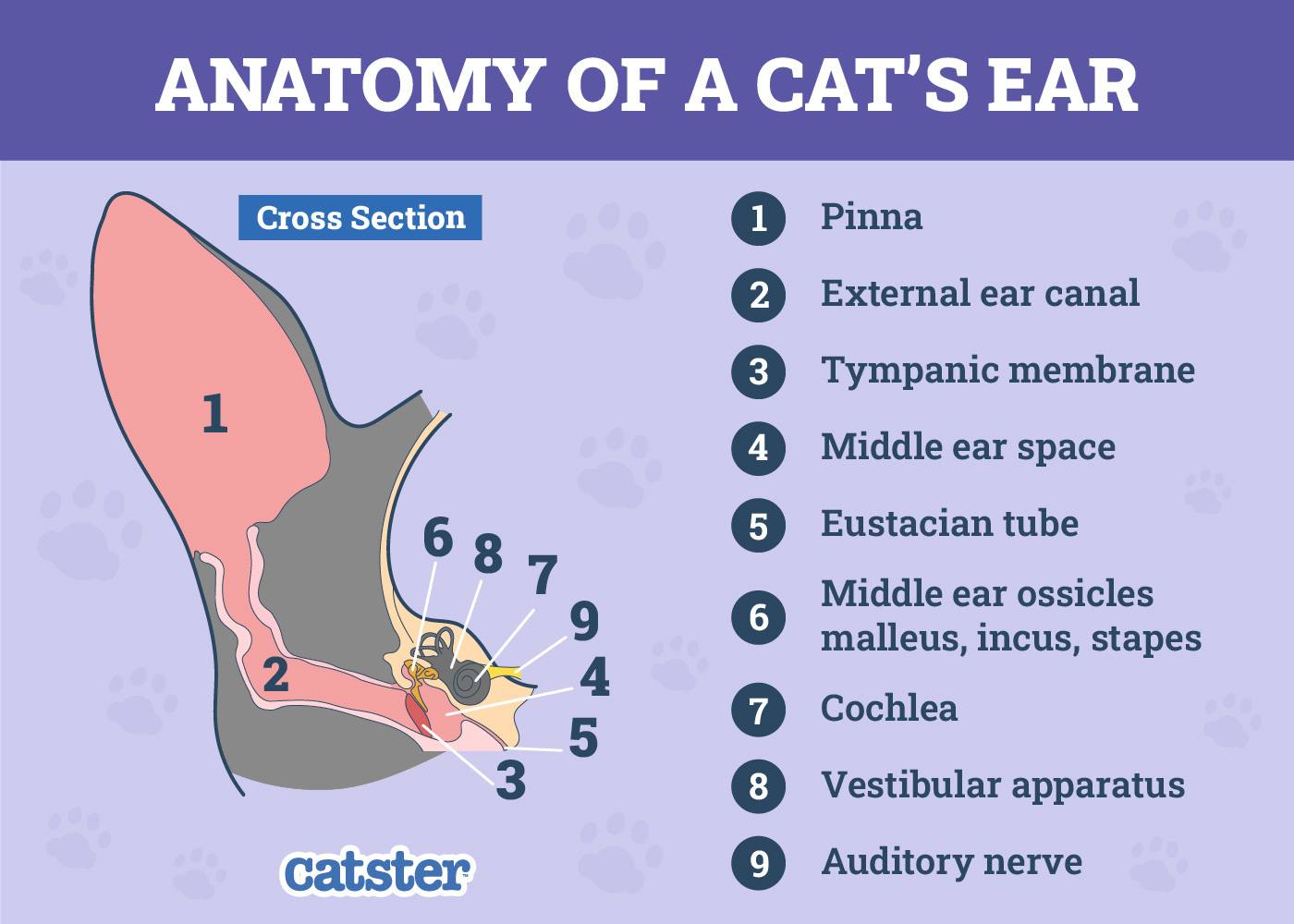
Your cat’s ears are also very helpful for navigating the world around them. The slightly cone-shaped pinna helps direct sound into the middle ear and allows your cat to pinpoint the source of the sound.
4. Touch
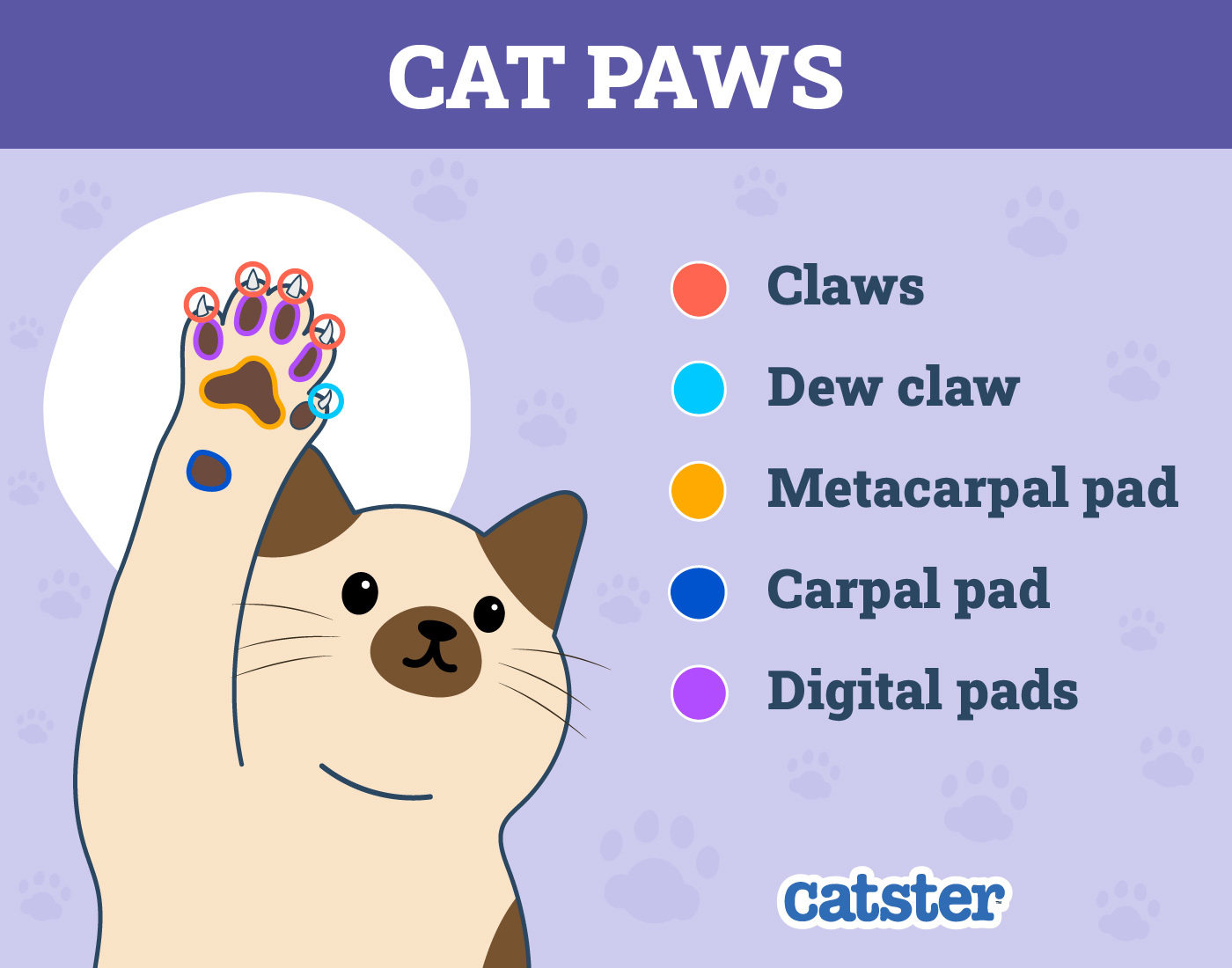
Cats also have interesting ways to navigate through touch. Their whiskers provide signals as your cat winds their body through narrow spaces. Aside from the whiskers, they have touch receptors in their paws and nose.
5. Smell
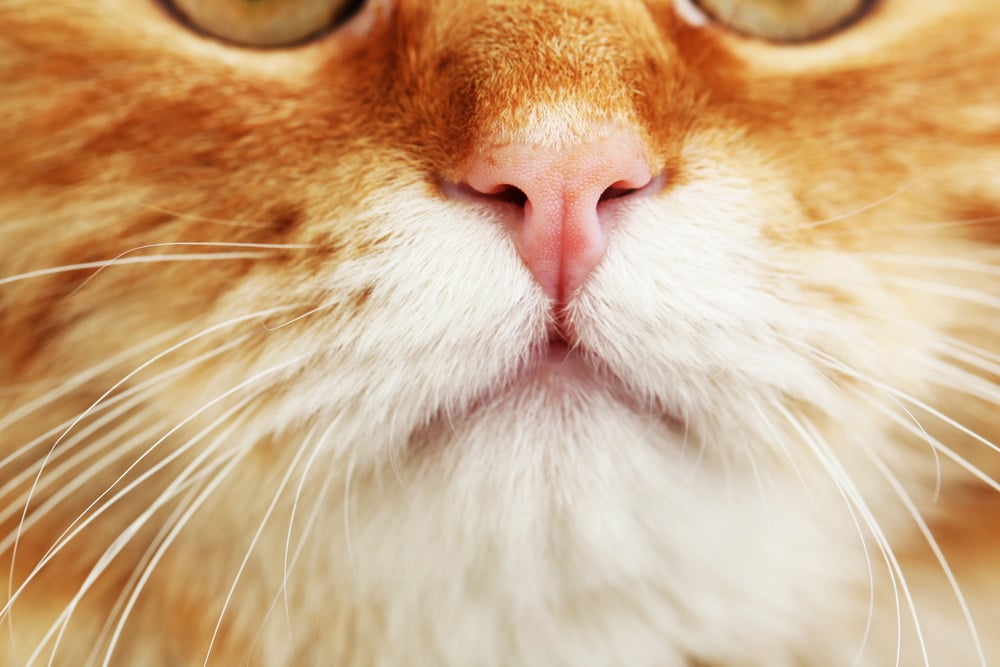
Cats rely heavily on their sense of smell. If your cat has a respiratory infection, they may have trouble scenting their food, which leads to many kitties refusing to eat.
Cats also have a unique structure called the vomeronasal organ. Located just behind their upper incisors in their mouth, this structure helps cats detect and process pheromones. Speaking of pheromones, your cat produces them from an array of places, including between their toes and their anal glands.

Frequently Asked Questions (FAQ)
What are the main parts of your cat’s brain?
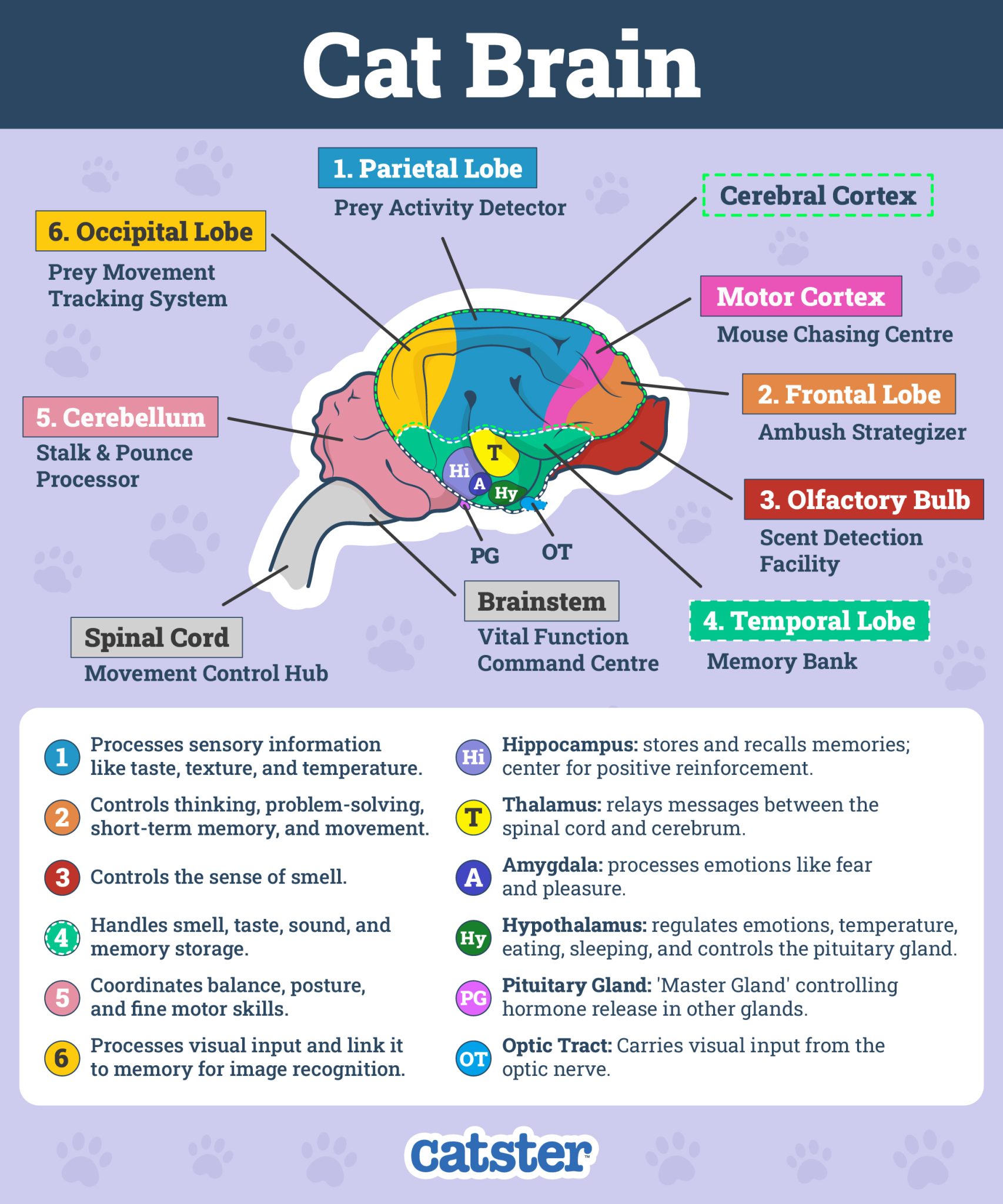
Your cat has a nervous system similar to your own. There are two parts to the central nervous system (or CNS):
- The brain
- The spinal cord
These structures can be further divided. For example, the major parts of the brain include:
- The cerebellum
- The cerebrum
- The brainstem
Are cats getting less intelligent?
We can’t quite compare measurements of how intelligent your cat is compared to their ancestors, but scientists have been studying the size of how cats’ brains have changed. They’re getting smaller.
According to the study, house cats may have undergone a 25% reduction in the size of their brain when compared to European and African wildcats, their wild cousins.
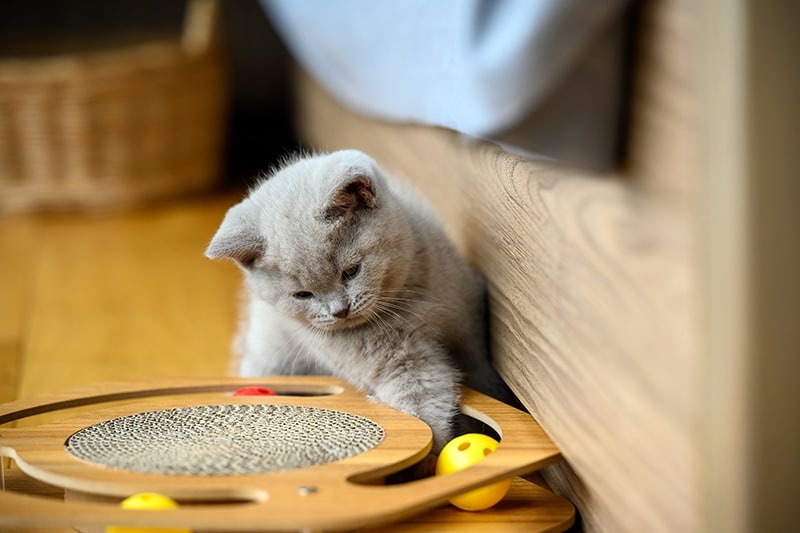

Conclusion
Your cat’s brain is unique and allows them to be amazing hunters. Even if we can’t make an easy determination about whether cats or dogs are more intelligent, they’re still wonderful members of our families.
See also:
- How To Keep Outside Cats Cool in the Summer: 5 Vet-Approved Tips
- Cats Against the World: The Card Game That Obsesses Us
Featured Image Credit: Vershinin89_Shutterstock

